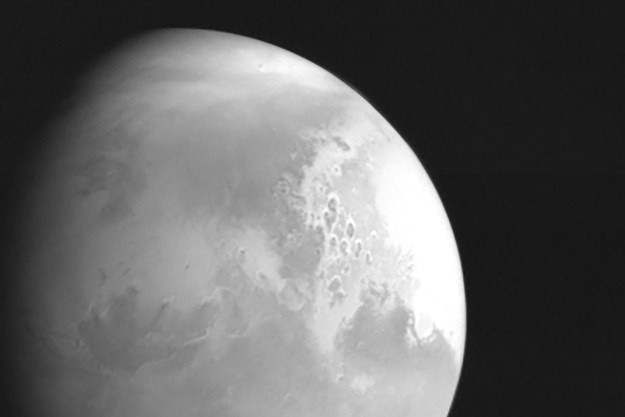China has successfully landed its Chang’e 5 probe on the surface of the moon in a mission that aims to return the first lunar rocks to Earth since 1976.
An uncrewed lander and ascender touched down near Mons Rümker — an isolated volcanic complex in the moon’s Ocean of Storms region — on Tuesday, December 1, Chinese state news agency Xinhua reported.
Over the next few days, the lander will use its onboard tools to drill as deep as 2 meters (6.6 feet) before gathering lunar rocks weighing around 2 kilograms (4.4 pounds). An ascender will then carry the rocks to the Chinese orbiter currently circling the moon. The haul will be returned to Earth later this month.
The sample is expected to come down in the grasslands of Inner Mongolia about 250 miles northwest of Beijing, the same area where Chinese astronauts return to Earth.
NASA official Thomas Zurbuchen congratulated China on its lunar landing, adding: “We hope everyone will benefit from being able to study this precious cargo that could advance the international science community.”
Congratulations to China on the successful landing of Chang’e 5. This is no easy task. When the samples collected on the Moon are returned to Earth, we hope everyone will benefit from being able to study this precious cargo that could advance the international science community. pic.twitter.com/2xoKouf3dq
— Thomas Zurbuchen (@Dr_ThomasZ) December 1, 2020
A Long March 5 rocket carrying the probe launched from Wenchang Space Launch Center in Hainan province — around 1,400 miles south of Beijing — a week ago.
This is China’s third soft landing on the moon in seven years but this latest mission is its first attempt at returning lunar rocks. If successful, it will be the first rock-gathering moon mission since a Soviet mission in 1976, though that outing only brought back 200 grams (0.4 pounds) worth of lunar material. Prior to that, only the U.S. has returned lunar samples, during its Apollo program.
The China National Space Administration (CNSA) says the samples of lunar material should enable scientists to learn more about how Earth’s moon came into existence. The mission also gives it the chance to try out new technology for more ambitious missions in the future that include the nation’s first attempt at putting its own astronauts on the lunar surface, possibly by 2030.
In other efforts demonstrating China’s growing interest in space exploration, the CSNA recently launched a Mars-bound spacecraft that’s expected to reach the red planet in February 2021.
Editors' Recommendations
- China confirms target date for landing taikonauts on the moon
- Here’s where NASA will land astronauts on the moon
- How to watch India attempt to join exclusive moon-landing club
- NASA offers new date for crewed lunar landing as hopes for 2024 fade
- New Chang’e-5 lunar sample includes youngest volcanic moon rocks to date


